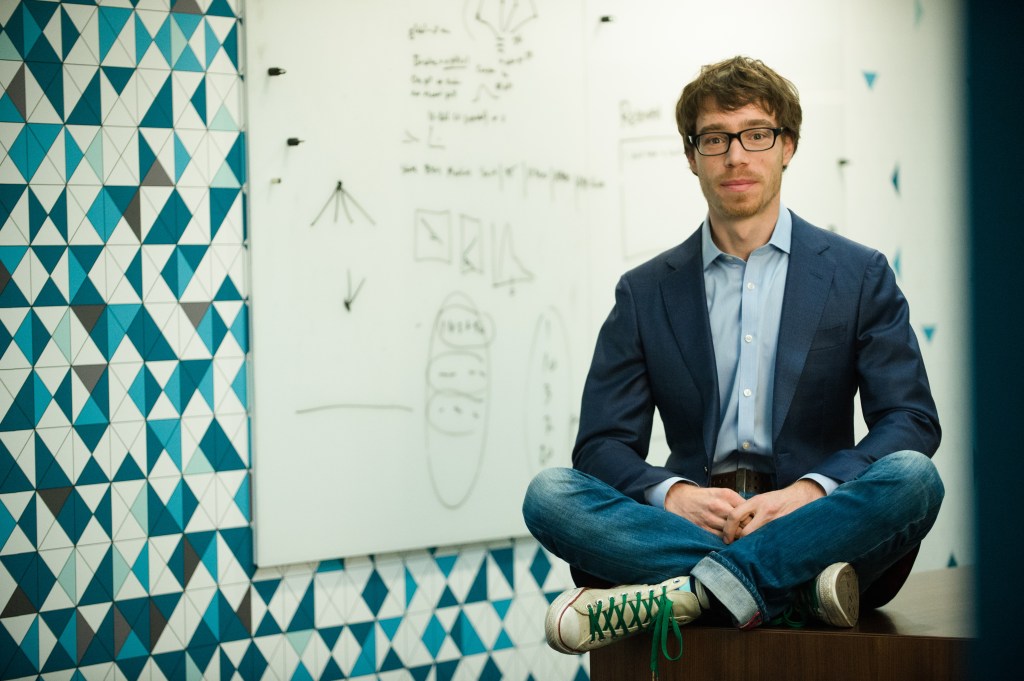Crowdsourcing innovation

“No matter how big your company is, there are more smart people outside the company than inside,” says Chris Riedl.
This is why Riedl, a professor of business and computer science at Northeastern, is so interested in crowdsourced innovation.
Riedl won a Young Investigators Award from the Department of Defense for his work on collaborative research, and also won an $800,000 DOD grant to collaborate with colleagues from the Massachusetts Institute of Technology, Stanford University, and Carnegie Mellon University on collective intelligence.
His past research shows that crowdsourced problem solving can be improved dramatically by combining it with the “emergent” qualities of group dynamics.
Emergence
To appreciate the work of Riedl’s group, you have to understand the concept of emergence. Simply put, it’s the ability of a group to create solutions that far exceed the creative limitations of its members. It’s not just that there are more ideas. Riedl says there’s something almost “magical” about group dynamics that makes the collective whole much more than the sum of its parts.
To appreciate the work of Riedl’s group, you have to understand the concept of emergence.
In nature, no individual bee has the intellectual or organizational capacity to build a beehive, yet a group of several thousand bees—each with the same limited intelligence—can accomplish this sophisticated task. No one can explain how it happens. But this is emergence.
On a human level, Riedl and others theorize that a network of individuals, whether working in close proximity or connected via the internet, can harness this same emergent quality to craft solutions that surpass the ability of any of its members.
Most companies structure crowdsourcing as a form of contest to solve a particular challenge. The company may be gathering ideas for a new product or recruiting outside experts to solve a daunting technical challenge. Either way, a prize is offered to attract participants. The company typically runs the contest through an independent company that already has thousands of potential participants lined up in a variety of fields.
This dramatically increases the number of problem solvers. But it’s still hundreds of individual bees trying to build a beehive. This is where emergence comes in.
The idea
The breakthrough made by Riedl’s group was to find a way to create an “emergent” process among individuals spread out across the world.
Not only would this utilize the power of emergence, it would address one of the most persistent limitations of traditional crowdsourcing. Because contest participants work individually, complex challenges have to be deconstructed into pieces that a single person can handle.
“Not all problems can be broken down that way,” says Riedl. “So our idea was: What if we put two of them together so that we get the enormous talent pool of crowdsourcing combined with the emergent qualities of a team?”
The group tested its theory of crowdsourced emergence on a project for a major space agency; Riedl is not at liberty to disclose its name.
The challenge posed to experts on the crowdsourcing website was to create an algorithm that could determine the optimal combination of medical supplies to bring on a space mission. The algorithm had to account for an enormous number of variables, including the individual makeup of the crew and the specific nature of the mission. Because supplies on a space shuttle are severely limited by both the weight and the limited space, the algorithm had to make hundreds of tradeoffs to determine which useful supplies to bring and which to leave behind. It had to take into account the gender and medical history of each member of the crew as well as the specific tasks to be performed on the mission.
Riedl and his collaborators ran the contest through a crowdsourcing platform with more than half a million tech developers. They assigned the participants into random five-person teams and gave them 10 days to come up with a solution. Team members did not know one another and were spread all over the globe in different time zones.
Lessons learned
First, group crowdsourcing worked extremely well and the space agency is now using the winning algorithm to determine the contents of medical kits on future missions.
The space agency is now using the winning algorithm to determine the contents of medical kits on future missions.
Second, machine learning analysis of the group interactions revealed that the best solutions came from the teams that displayed the strongest emergence.
Third, the groups that displayed the most “burstiness” created the best solutions. Riedl defines burstiness as intense flurries of activity over a short period of time. It wasn’t the number of interactions, but how closely these exchanges were clumped together that determined the quality of the solution. So a group that exchanged 40 ideas over 10 days was far less creative than a group that exchanged 40 ideas in two one-hour spurts.
Fourth, groups that narrowly focused their discussions were less creative. The range of topics discussed correlated strongly with the quality of their ultimate solution.
The relevance to business innovation is inescapable, according to Riedl. Not only is group creativity more effective, it can be conducted effectively online, across time zones, and among people who do not know one another. Even more important is proof that emergence can be created among groups of people who have never met and are separated by thousands of miles.





